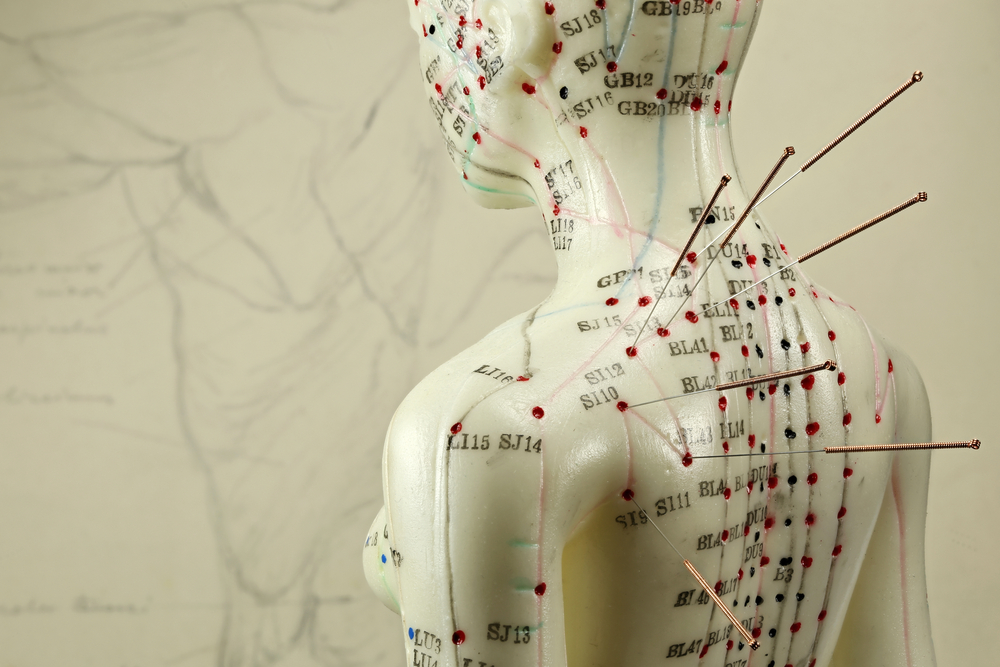Menu
- SITCM Overview
- Prospective Students
- Current Students
- Alumni
- Teaching Clinic
Acupuncture is one of the various treatments that fall under the umbrella of Traditional Chinese Medicine. By inserting needles into specific points along the body, acupuncture practitioners believe that the body’s energy flow will re-balance.
This concept has existed since ancient times. Today, many Western acupuncture practitioners view acupuncture points as places to stimulate nerves, muscles and connective tissue and believe that this stimulation boosts the body’s natural painkillers.
Whatever the mechanism, acupuncture is typically used by patients to treat pain or boost overall wellness. As a key component of Traditional Chinese Medicine, SITCM students study acupuncture in the classroom and practise it in the SITCM Teaching Clinic.
When to Seek Acupuncture?
Acupuncture is mainly used for pain relief, especially the pain associated with conditions such as dental pain, lower back pain, neck pain, osteoarthritis, labour pain and menstrual cramps. It is also sometimes used for some chronic issues such as chemotherapy-induced and postoperative nausea and vomiting, headaches, migraines, and respiratory disorders such as allergic rhinitis. No special preparation is required before acupuncture treatment.

Risks
Acupuncture is a low-risk technique that is provided by a certified traditional Chinese medicine (TCM) practitioner, or under the supervision of a practitioner when done at our Teaching Clinic. Practitioners use single-use, disposable needles to minimise any risk of infection.
Possible side effects of acupuncture include soreness and minor bleeding or bruising where the needle is inserted. Those at higher risk of complications include people with a bleeding disorder or those on blood thinners – since the chances of bleeding or bruising from the needles increase. Other people at higher risk are those who have a pacemaker since some techniques involve applying mild electrical pulses to the needles which could then interfere with a pacemaker’s operation. Pregnant women should also consult their gynaecologist since some types of acupuncture are thought to stimulate labour, which could result in premature delivery.
TCM practitioners at SITCM will always ask you for your medical history before performing any treatment.
What to Expect?
Acupuncturists insert very thin needles into specific spots on your body, which typically produces a tingling or numbing sensation in the patient.
The initial evaluation may take up to an hour, and subsequent appointments usually take about 30mins. The number of treatments will depend on the condition being treated and its severity, with six to eight treatments being the most common practice.
Your practitioner will explain the planned treatment and whether you need to remove any clothing – in which case a gown, towel or sheet will be provided. The treatment is done on a padded table, similar to the massage table. At the SITCM Teaching Clinic, heat lamps are also provided for patient comfort.
Generally, 5 to 20 needles are used during a session. Depending on the condition and practitioner, the needles may be gently moved or twirled after placement, or heat or mild electrical pulses may be applied. These needles remain in place for 10 to 20 mins.
You should feel relaxed and energised after the treatment. If you don’t feel an improvement within a few treatments, let your practitioner know so they can consider alternative treatments or referral to another medical professional.
If you wish to attend an acupuncture course in Sydney, check out the accredited degree available at SITCM. If you are looking for TCM treatment, book an appointment at our clinic today.